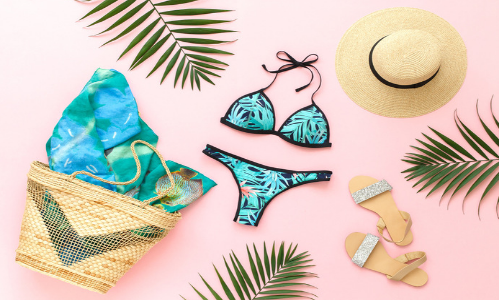Launching a swimwear collection can be both exciting and challenging. From sketching the first design concept to delivering finished pieces into customers’ hands, the process requires creativity, planning, and the right manufacturing partners. For entrepreneurs, designers, or growing fashion brands, understanding each step of the journey is key to building a successful swimwear brand.
In this article, we’ll break down what it takes to go from design to production, and what you need to prepare if you want your swimwear collection to stand out in today’s competitive market.
1. Turning Inspiration into Swimwear Design
Every successful swimwear collection starts with a clear vision. Inspiration may come from art, nature, travel, or current fashion trends. However, beyond creativity, you must also think about functionality and comfort.
Key considerations for design:
- Target Market: Are you designing for luxury, sustainable swimwear, or mass-market retail?
- Silhouettes: Bikinis, one-pieces, tankinis, and cover-ups all appeal to different consumers.
- Trends vs. Timelessness: A mix of trend-driven and classic designs often gives collections a longer selling life.
- Body Inclusivity: Offering a size range (XS–XXL or beyond) helps your brand connect with more customers.
�� Pro tip: Many successful designers create mood boards and CAD sketches before sampling. This ensures a smooth handover to the manufacturer later.
2. Choosing the Right Swimwear Fabrics
Fabric selection is one of the most important steps in swimwear production. The right swimwear textiles not only determine how the garment looks but also how it performs in water.
Popular swimwear fabrics:
| Fabric Type | Benefits | Considerations |
| Nylon/Spandex | Stretchy, smooth, comfortable, widely used | May lose elasticity over time |
| Polyester/Spandex | Durable, chlorine-resistant, holds color well | Slightly firmer hand feel |
| Eco Fabrics (e.g., Carvico Vita, REPREVE) | Sustainable, made from recycled materials | Higher cost but strong market demand |
Today, sustainability is a growing trend. More brands are shifting to eco-friendly swimwear fabrics, both to meet consumer demand and to strengthen their brand image.
3. Sampling and Prototyping
Once the design and fabrics are selected, the next stage is sampling. This is where your ideas become real garments.
Why sampling matters:
- Tests the fit, construction, and comfort
- Allows you to adjust patterns and details before mass production
- Helps in creating professional lookbooks or line sheets for sales
Most swimwear brands go through 2–3 rounds of sampling before finalizing their production-ready designs.
4. Finding a Reliable Swimwear Manufacturer
Your choice of swimwear factory can make or break your collection. An experienced manufacturer ensures quality, consistency, and timely delivery.
Checklist for choosing the right partner:
- Experience in Swimwear: Specialized factories understand stitching, lining, padding, and elastic requirements.
- MOQ (Minimum Order Quantity): Choose a factory that aligns with your business size. Some offer low MOQ for startups.
- Communication & Transparency: Clear updates on production stages build trust.
- Ethical Practices: More brands are looking for factories that follow ethical and sustainable standards.
�� Pro tip: Always request production samples before committing to bulk orders.
5. From Production to Quality Control
Once your manufacturer begins bulk production, strict quality control (QC) is essential. Swimwear must fit well, stretch properly, and withstand repeated use in water.
Standard quality checks include:
- Seam strength and stitching consistency
- Elastic recovery after stretch
- Fabric colorfastness under chlorine and UV exposure
- Size grading across XS–XXL (or more)
Reliable factories usually have AQL (Acceptable Quality Limit) testing in place, but you can also hire third-party inspection if needed.
6. Branding and Packaging
A swimwear collection is not just about the garment itself—it’s also about the brand experience.
Key elements:
- Labels & Tags: Reflect your brand identity and professionalism.
- Eco-friendly Packaging: Recyclable or biodegradable bags appeal to conscious consumers.
- Unboxing Experience: Adds emotional value for customers, especially in D2C (direct-to-consumer) sales.
7. Marketing and Launch Strategy
With your collection ready, the next step is launching. Here’s how to bring your swimwear brand into the spotlight:
- E-commerce Website: Platforms like Shopify or WordPress with WooCommerce are popular.
- Social Media Marketing: Instagram, TikTok, and Pinterest are powerful for fashion visuals.
- Influencer Partnerships: Collaborating with swimwear influencers can quickly boost visibility.
- PR & Guest Posts: Writing on relevant fashion, lifestyle, and sustainability websites helps with both brand credibility and SEO.
8. Challenges and How to Overcome Them
Launching a swimwear collection isn’t without hurdles:
- High Competition → Differentiate with design, sustainability, or unique brand voice.
- Inventory Risk → Start with smaller orders and test demand.
- Production Delays → Build buffer time into your launch plan.
Conclusion
Bringing a swimwear collection to life is a rewarding journey that requires a blend of creative design, technical fabric knowledge, reliable manufacturing, and strong branding. Whether you’re an emerging designer or an established fashion brand, mastering the process from design to production gives you the foundation to launch successfully—and stand out in the global swimwear market.
If you’re considering your own swimwear line, remember: the right partners and preparation can make your dream collection a reality.
